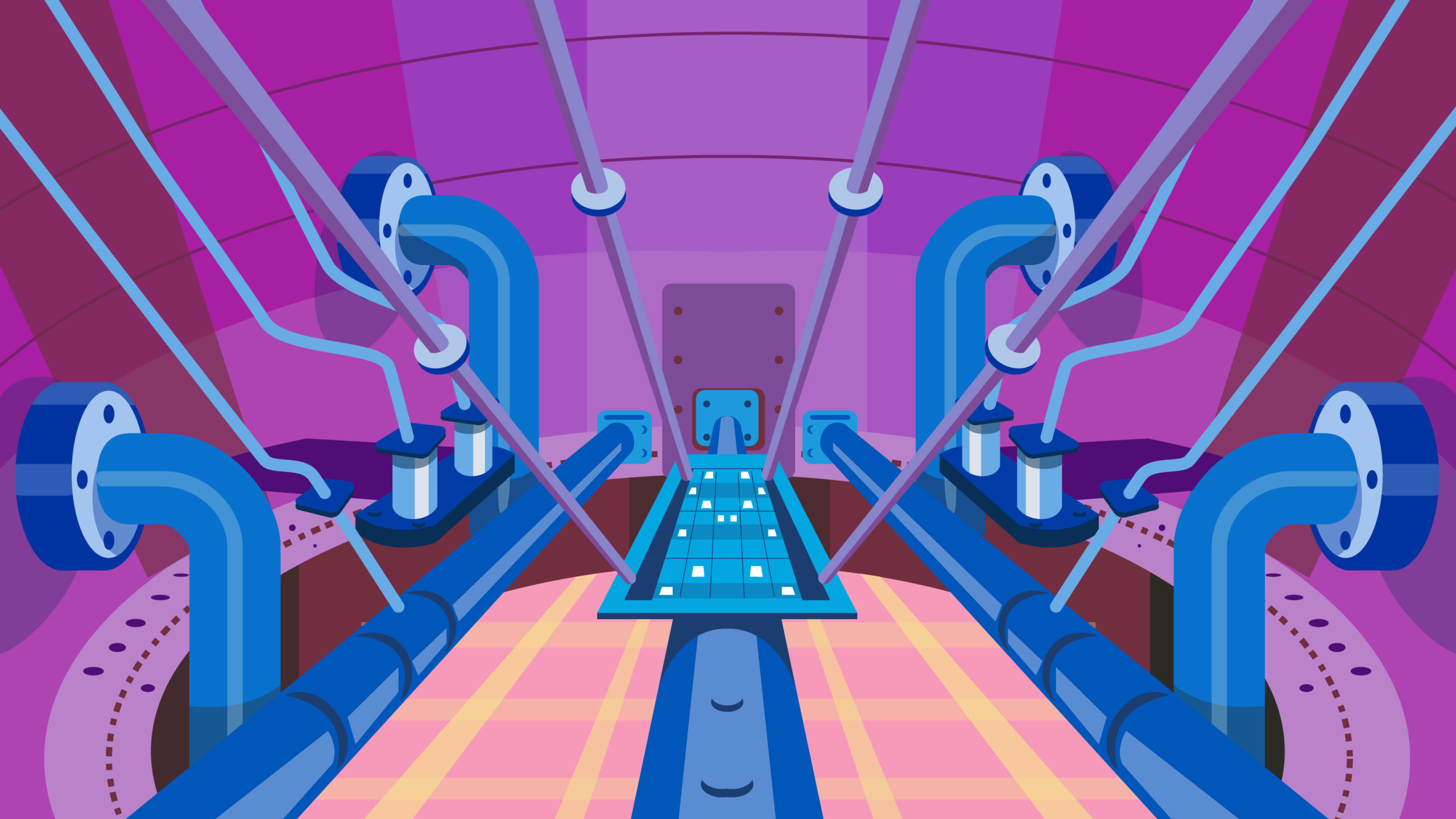Uranium has been a relative newcomer to the story of human progress. Yet this element still has a vast amount of untapped potential to contribute toward global prosperity. We tend to think of uranium as a glowing green rock; however, pure uranium is a silvery-grey radioactive chemical element.
The first pre-industrial use for uranium was as a coloring agent in the manufacture of pottery. Naturally-occurring uranium oxide was ground into a yellow powder and applied as a pottery glaze as early as 79 CE. The discovery of the element uranium has been credited to the German chemist Martin Heinrich Klaproth. Klaproth was the first to isolate an oxide of uranium and is responsible for naming the element. However, it would take another fifty-two years to isolate metallic uranium and a further 55 years before the French engineer and physicist Henri Becquerel would unlock uranium’s radioactive significance in 1896.
Built in 1943, the X-10 Graphite Reactor at Oak Ridge National Laboratory in the United States became the first artificial uranium powered nuclear reactor designed and built for continuous operation. Just eight years later, a nuclear reactor, the EBR-1 at the Atomic Energy Commission’s National Reactor Testing Station near Arco, Idaho, became the first reactor to produce electricity in 1951. On December 20, 1951, the Experimental Breeder Reactor, provided enough energy to light four 150 watt light bulbs. Today’s reactors are much more powerful.
Human civilization uses uranium for thousands of applications, including the production of plutonium, vehicle armor, radiation shielding, medicine, gamma sterilization and much more. But nowhere in civilian use does uranium have a greater impact than in the production of clean, ultra low-carbon electrical energy.
Uranium is enormously energy-dense, roughly a million times as energy-dense as low-grade hydrocarbon fuels. A gigawatt of electricity produced in a coal-fired power plant requires approximately 9,000 tons of fuel. An equivalent amount of clean energy sourced from uranium requires just 3 kilograms (6.6 pounds) of uranium fuel.
From humble beginnings to a modern powerhouse, roughly 10 percent of global electricity production is now derived from approximately 440 uranium powered nuclear reactors, with another 50 reactors currently under construction. In 2018 these reactors combined to produce an astonishing 2,700 terawatt hours of clean, ultra low-carbon electricity. To put the scale of that contribution in perspective, one terawatt-hour of energy is about the same as the annual energy consumption of 27,000 citizens in the European Union.
The general zeitgeist is that nuclear energy is a dangerous and unnecessary part of the energy production mix. However, nothing could be further from the truth. The production of nuclear power is one of the safest forms of electricity production. Where hydrocarbons eject their contaminants into the atmosphere, nuclear energy centralizes waste to an astonishingly small space and, in doing so, prevents its release into the atmosphere.
Between 1965 and 2018, global primary energy consumption derived from uranium powered nuclear reactors climbed over 196 percent. All the while, nuclear power remained civilization’s safest form of centralized electrical energy production. Consider death rates from energy production per TWh (i.e., death rates from air pollution and accidents related to energy production, measured in deaths per terawatt hour). Nuclear energy’s death rate comes at 0.07 per TWh. Energy production from brown coal has a death rate of over 32 per TWh. Put differently, for every trillion watt-hours of energy production from brown coal, roughly 32 lives are lost.
Electricity production via nuclear energy remains one of the cleanest forms of energy production, even after taking nuclear waste into account. Conventional energy produced with hydrocarbons is far from harmless, as it expels the waste of combustion into the community and the greater environment. The resulting air pollution is a significant source of mortality and illness, particularly in developing countries. By contrast, nuclear waste storage is currently resulting in little or no mortality and illness, as the majority of nuclear waste is sitting securely within the grounds of the nuclear power plants themselves or in approved medium term storage. The key challenges to the safe and effective long term storage of nuclear waste are political and cultural, not technical. The Onkalo Spent Nuclear Fuel Repository in Finland is set to begin the secure sealing of spent nuclear fuel this year, demonstrating that the responsible management of nuclear waste is both possible and practical. No matter how you slice the data, uranium powered nuclear energy comes out as one of the safest, cleanest, and most reliable sources of high capacity baseload electrical energy.
Unfortunately, while the true cost-benefit analysis of nuclear energy is dramatically favorable to its use, people remain unjustifiably apprehensive. To meet the growing demand for clean, low-carbon energy, we will need to embrace reason and develop and deploy new and innovative modes of using uranium as a fuel for the production of electricity.

